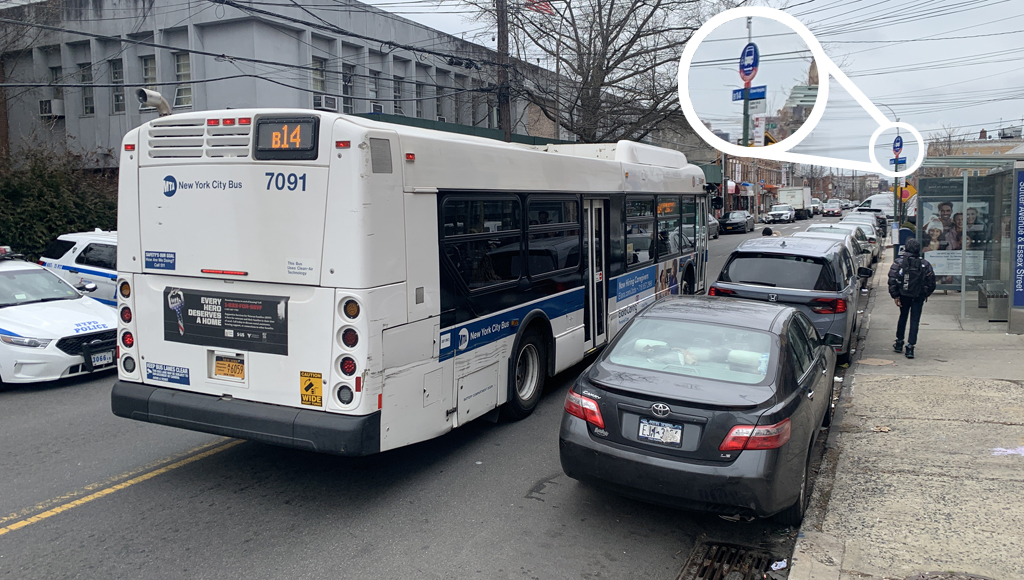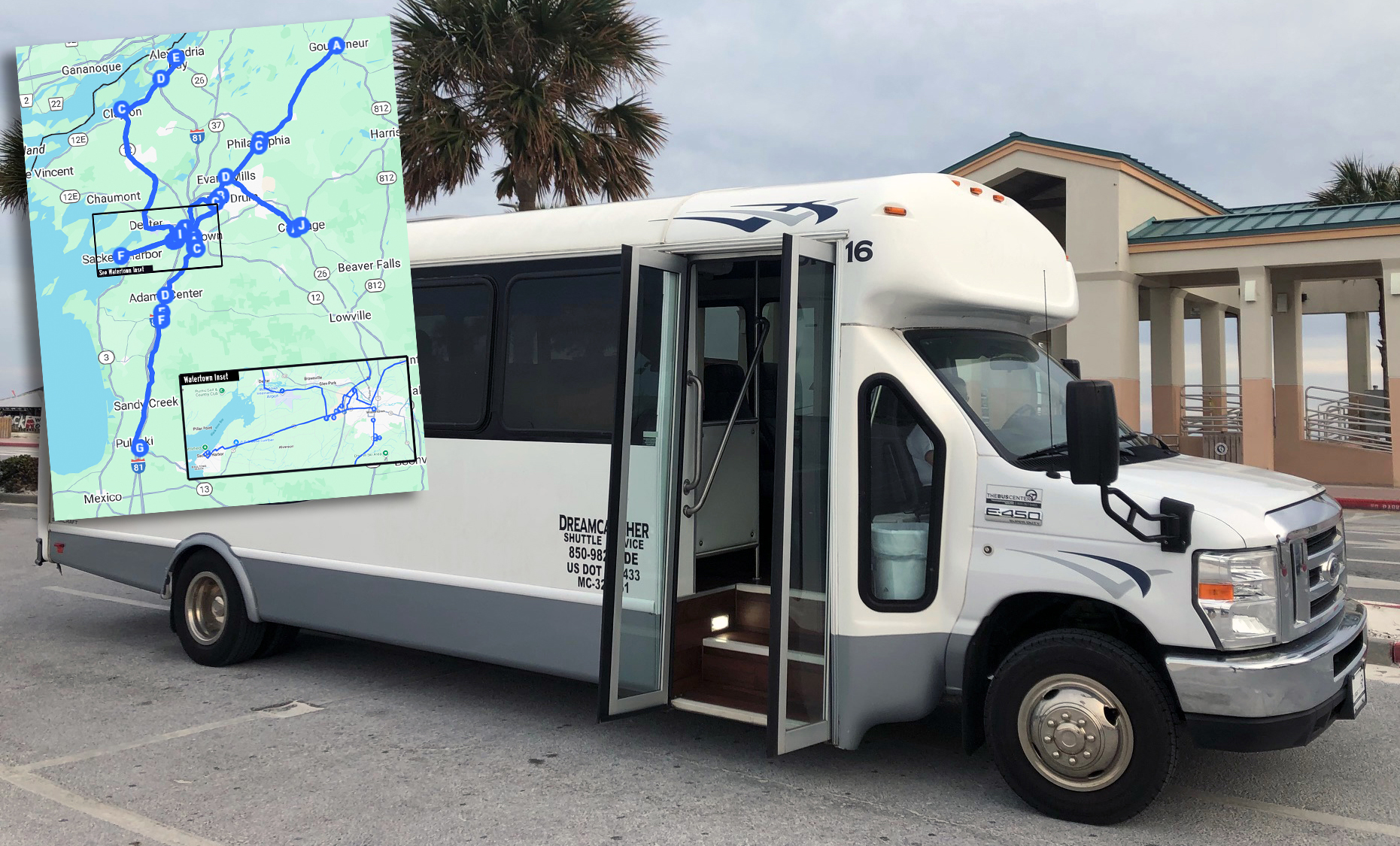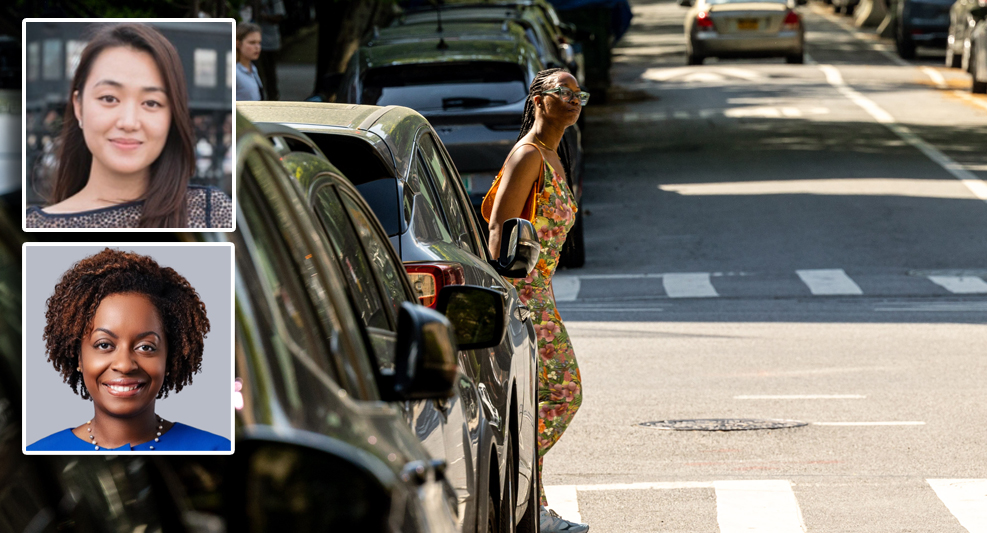It's a good news/bad news thing: Mayor de Blasio will allow the just-passed "Vision Zero Design Standards" bill to become law — but he won't sign it or acknowledge its passage with a bill-signing ceremony that would force him to share the stage with street safety activists who have been railing on the would-be president for months.
City Hall spokesman Seth Stein confirmed that de Blasio will allow the bill to take effect on June 28, 30 days after it passed on May 29.
Stein said the mayor would not sign it, nor hold a ceremony.
"We support this legislation, and it will lapse into law in 30 days," Stein said. He declined to answer questions about the mayor's motivation for not holding a formal bill-signing ceremony. The mayor long opposed the bill, despite its connection to his signature street-safety initiative, but got behind it in the last few months as protests increased over the city's rising traffic fatality numbers.
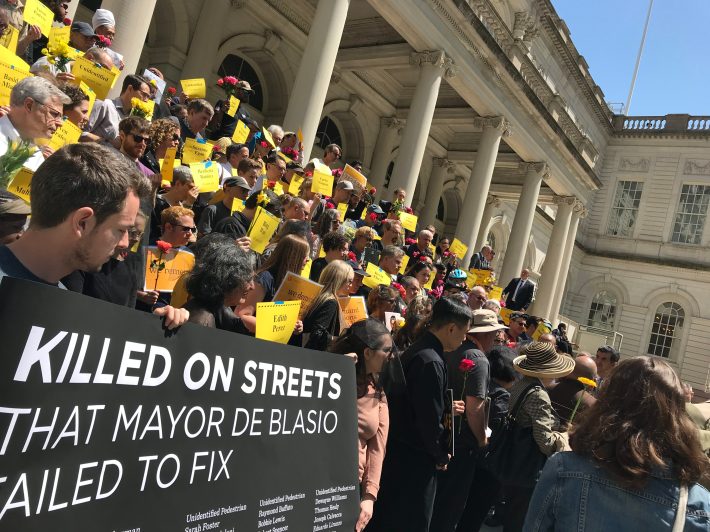
Stein pointed out that the mayor actually signs very few bills — and has even fewer signing ceremonies. Indeed, in calendar year 2018, Hizzoner only signed about 20 percent of bills that passed the Council, amNY reported. That's down from putting his John Hancock on 97 percent of new laws in 2016 and 61 percent in 2017.
City Hall has cautioned not to read anything into the mayor's decision to not sign a bill, saying signings and ceremonies have more to do with schedule than anything else. Indeed, if the mayor did not support the bill, he could veto it.
But the Vision Zero Design Standards bill, which was pushed by Council Speaker Corey Johnson, passed with a veto-proof majority, so it would almost certainly become law even if the mayor did not support it. So it is not clear if de Blasio is deciding not to sign it publicly because he's just busy or if he did not want to share a stage with the very activists who rallied against him earlier this month.
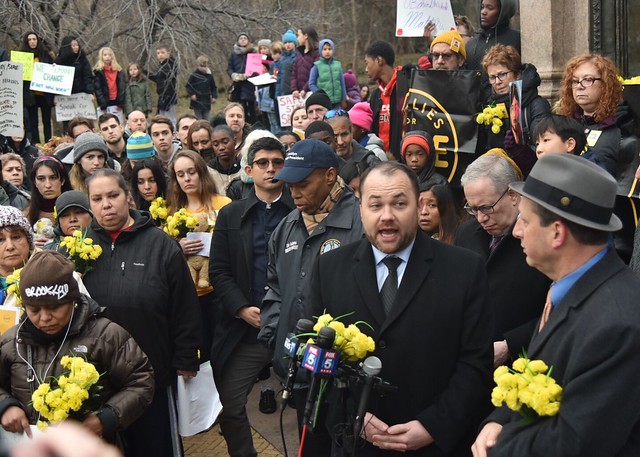
The bill requires the city to make substantial changes to road design when streets are renovated. In the exact wording, Intro. 322 would:
require the Department of Transportation to develop a standard checklist of safety-enhancing street design elements that the department must consider for all major transportation projects. DOT would be required to post such standard checklist on its website, and could amend the standard checklist by rule only to promote vehicular, pedestrian and bicycle safety. For each major transportation project, DOT would be required to complete a checklist stating which street design elements have been applied, and if an element has not been applied, the reason for not applying such element.
The city had opposed the bill on the grounds that its reporting requirement would cost time and money, and that a standard checklist would not add value to the agency’s current process. In August, DOT Chief Operations Officer Margaret Forgione testified against the bill.
"Weighing street design safety elements to employ in any project is individualized, complex and dependent on any number of site-specific factors," she said. “Intricacies of these decisions cannot be conveyed in a quantifiable checklist, which would be misleading because it would not reflect how DOT is maximizing safety at any given location using our engineering judgment."
Forgione may have believed that back in August, but on June 28, she won't be able to anymore.



